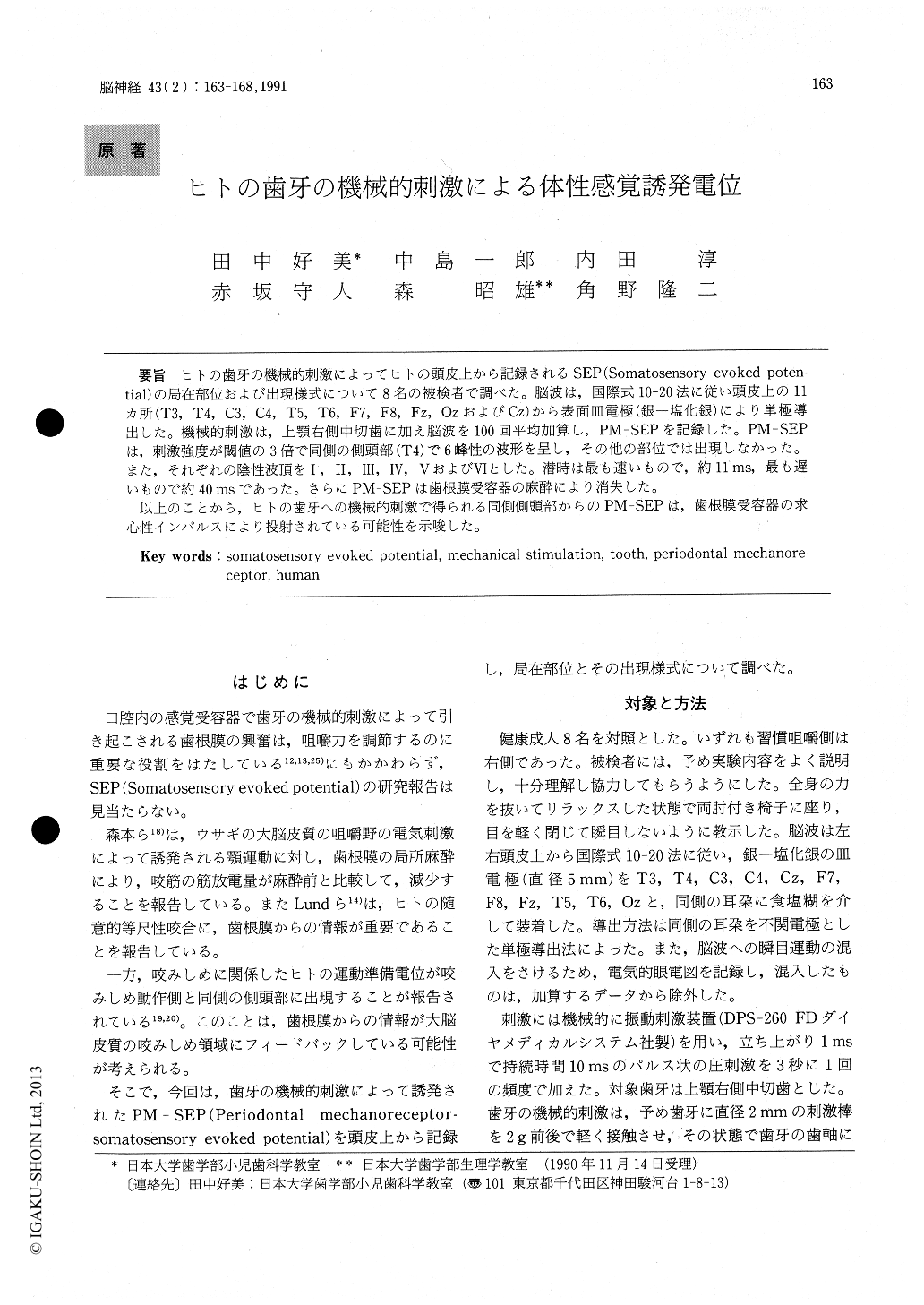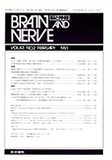Japanese
English
- 有料閲覧
- Abstract 文献概要
- 1ページ目 Look Inside
ヒトの歯牙の機械的刺激によってヒトの頭皮上から記録されるSEP(Somatosensory evoked poten—tial)の局在部位および出現様式について8名の被検者で調べた。脳波は,国際式10-20法に従い頭皮上の11ヵ所(T3, T4, C3, C4, T5, T6, F7, F8, Fz, OzおよびCz)から表面皿電極(銀—塩化銀)により単極導出した。機械的刺激は,上顎右側中切歯に加え脳波を100回平均加算し,PM-SEPを記録した。PM-SEPは,刺激強度が閾値の3倍で同側の側頭部(T4)で6峰性の波形を呈し,その他の部位では出現しなかった。また,それぞれの陰性波頂をI,II,III,IV,VおよびVIとした。潜時は最も速いもので,約11ms,最も遅いもので約40msであった。さらにPM-SEPは歯根膜受容器の麻酔により消失した。
以上のことから,ヒトの歯牙への機械的刺激で得られる同側側頭部からのPM-SEPは,歯根膜受容器の求心性インパルスにより投射されている可能性を示唆した。
We examined topographical analysis of the PM-SEP (periodontal mechanoreceptor-sensory evokedpotential) inducing by mechanical stimulation of the tooth in eight subjects. Sensory evoked poten-tial were recorded from various regions of the scalp by the mechanical stimulation of the normal tooth. Eleven electrodes were placed according to the International 10-20 system (T3, T4, C3, C4, T5, T6, F7, F8, Fz, Cz, Oz) . The mechanical stimulation was applied to the right upper first incisor tooth. PM-SEPs were averaged 100 times following the mechanical stimulation of the tooth produced six waves of SEP at the ipsilateral temporal area (T4), but did not evoked any potential from the other regions. PM-SEP included I, II, III, IV, V and VI.The earliest latency (I wave) was approximately 11ms and latest latency (VI wave) was approxi-mately 40 ms. These PM-SEP observed by intensity with 3 times of the threshold. In addition, the all components were abolished after local anesthesia of the periodontal ligament.
These data suggests that the six waves of the PM -SEP were evoked the ipsilateral temporal region following mechanical stimulation of the tooth, and these regions were projected by afferent impulse from the periodontal mechanoreceptor.

Copyright © 1991, Igaku-Shoin Ltd. All rights reserved.


